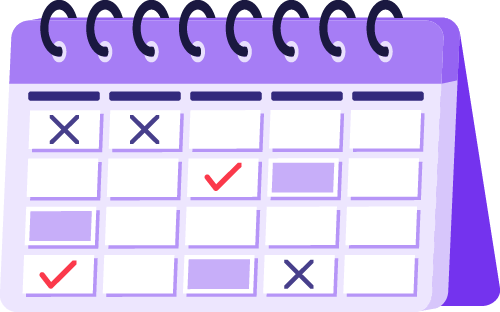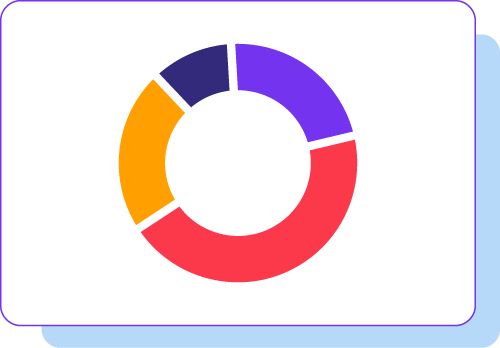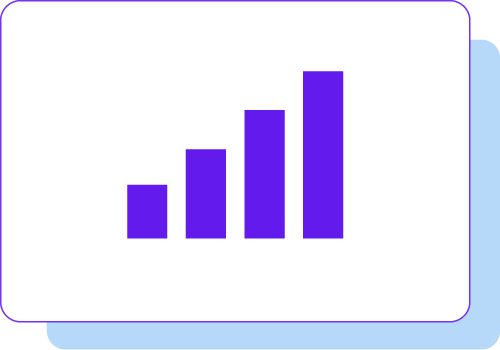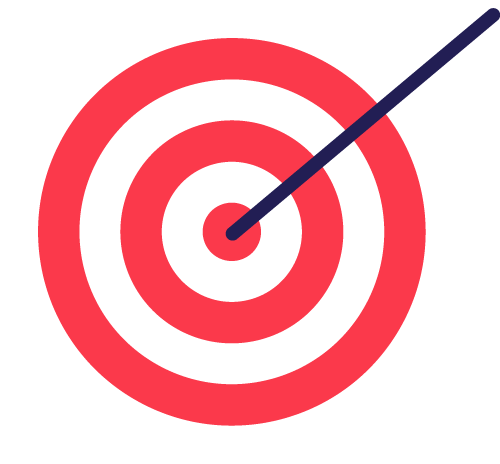Sales Lead Generation
Generating Sales Leads is an essential part of any successful business model, and the internet and digital media have drastically changed the way it’s done. Despite a wealth of resources available, 61% of marketers still struggle when it comes to lead generation, so how can you reach potential customers in today’s landscape?
To start, let’s define Sales Lead Generation in 2020 and explore its different forms. Then we’ll go through the eight-stage Lead Generation process designed to help identify high-value prospects and nurture them toward a purchase decision.
The stages include defining your target audience, creating a Lead magnet, driving traffic to your website, capturing leads, nurturing leads with email marketing campaigns, qualifying leads who are most likely to buy, following up with leads, and measuring your results. By effectively executing this process, you can achieve remarkable success in Lead Generation and provide a steady stream of customers to help support the growth of your business.
Take advantage of emerging digital marketing trends such as social media advertising and SEO optimization to make sure that your Lead Generation efforts are seen by the right people at the right time. With the right combination of strategy and technology, you can leverage effective Lead Generation tactics for long-term success.
Lead generation has become increasingly important in today’s digital marketing landscape as businesses strive to find new customers online. It is essential to understand how best to identify and nurture potential customers.
By following the outlined eight-stage process, you can ensure maximum success in generating sales leads. Additionally, by implementing modern trends like social ads and SEO optimization, you can improve your reach to help generate more leads. With the right combination of strategy and technology, lead generation is within your reach.
What is Lead generation?
Lead generation is a key component of any successful digital marketing strategy. By identifying and engaging potential customers through digital channels, you can grow your sales pipeline and maximize growth opportunities. To get the most out of your Lead Generation efforts, it’s important to understand the process and use all available methods such as email campaigns, social media outreach, search engine marketing, prospecting, advertising, events, or content creation.
While some may claim that outbound Lead Generation is dead – it simply isn’t true. Lead generation requires skillful data gathering, prospecting and qualification processes which can be difficult for those without the necessary expertise. With the right approach however you can find success in generating leads and driving conversions.
Lead Generation is an essential part of any successful digital marketing strategy and can greatly contribute to a business’s growth. Companies with effective Lead Generation processes in place typically enjoy 133% more revenue than the average business. Lead Generation helps to maximize sales opportunities, raise brand awareness, build customer loyalty, as well as generate organic interest around your business name.
There are two types of lead generation: inbound and outbound. Inbound strategies include indirect marketing efforts such as advertising, referrals, SEO, content creation, etc., while outbound is a more active method that involves actively searching for leads and pursuing them until a deal is closed.
Every successful lead has gone through a specific journey in order to become your client: awareness, attraction, outreach, conversion and close. To ensure the desired outcome is achieved, it’s important to follow an 8-stage lead generation process – analysis and planning; research; messaging; pre-targeting; landing pages; email sequences and phone calls; reporting; and new planning. Through each stage of the process, multiple steps are taken to qualify and nurture potential customers as they move along the sales funnel.
The 8-stage lead generation process
By leveraging Digital Marketing Strategies such as SEO, social media campaigns, content marketing, etc., businesses can effectively generate leads that have higher chances of converting into paying customers. With detailed analysis of customer behavior and data-driven insights, organizations can further optimize and refine their lead-generation process to maximize success.
The 8-stage lead generation process can be daunting to tackle, but with the right resources and expertise, marketing teams can successfully drive more qualified leads and create a better ROI for their business. By understanding customer intent and needs as well as implementing effective strategies at each stage of the process, businesses will have greater success in generating quality sales leads that convert into paying customers.
Successful Lead Generation is all about driving qualified leads through an 8-stage process – analysis and planning; research; messaging; pre-targeting; landing pages; email sequences and phone calls; reporting; new planning. With Digital Marketing strategies such as SEO, social media campaigns, content marketing, and data-driven insights, marketers can effectively generate leads that are more likely to convert.
By understanding customer intent and needs as well as implementing effective strategies at each stage of the process, businesses will have greater success in driving qualified leads and creating a better ROI for their business.
That’s why it’s important to partner with an experienced digital marketing team that understands how to integrate Lead Generation tactics into your existing sales funnel. With the right guidance and resources, your organization can optimize its performance across all channels and increase revenue from converted leads. Contact us today to learn more about how we can help you achieve success through effective Lead Generation!
Stage 1. Analyzing and Planning
As a Digital Marketing expert, it’s essential to have an updated Lead Generation process in place for sales and ensure that it is tailored to different criteria (i.e. products, company size, or industry). To do this effectively, you need to plan ahead and set out the timeline of your campaign launch as well as daily tasks for each team member (SDRs, researchers, etc.). In addition, consider the frequency and cadence of emails sent during the campaign and give your SDRs adequate time to ramp up.
Furthermore, having a reliable CRM tool is necessary for successful Lead Generation. If you don’t already have one, investing in such software may be wise. Additionally, decide on what other Lead Generation software you’ll use to generate higher quality leads, apart from a CRM tool. This software can be used for activities such as prospecting, lead list building, sales intelligence, data enrichment and social media outreach.
Finally, make sure to set realistic goals that your SDRs can hit and specify the weekly or monthly quotas they should reach. With this in mind and proper planning ahead of time, you’ll be able to ensure that your digital marketing strategy is successful. Good luck!
Stage 2. Research
High-quality Lead Generation begins with accurate, up-to-date data. To achieve impressive results, follow these research process steps: Prepare, Report & Analyze.
Before your researchers begin their work, they should be adequately trained on how to build and analyze buyer personas and ICPs, where to look for leads, how to filter out incorrect data, and how to work in the database. The process for researchers should involve looking for leads and contact information using data provider tools, uploading this data into a CRM system, and handing off the database to SDRs who can start prospecting right away.
Reporting is key for monitoring each worker’s performance and tracking incoming leads – consider setting a cadence for reporting such as daily, weekly, or monthly. Most Prospecting tools (GO Data, Yesware, BuiltWith, etc.) offer reports and filters to enable targeted analytics and interactive digital reports. This provides the metrics you need to measure progress and identify opportunities for improvement.
Stage 3. Messaging
Messaging is key when it comes to Lead Generation and should be used in various channels such as emails, landing pages, cold calling scripts, social media posts, pre-targeting ads, and playbooks. Your messaging should address the needs of each potential customer by answering the following questions: Why me? Why this product/service? Why now? The content should be tailored to your buyer persona, concise yet comprehensive, and most importantly human.
When crafting your message take a few minutes to research each lead individually and allow up to thirty minutes for creating the copy. Don’t forget to include a solid call-to-action (CTA) with a link back to your landing page at the end.
Stage 4. Pre-Targeting
Pre-targeting your leads is a crucial step in the Sales Lead Generation process, as it helps you engage with potential customers before they are ready to buy. Through pre-targeted ads, you can help raise brand awareness and warm up leads for cold outreach. It’s also an effective way of boosting outbound marketing KPIs such as click-through rate (CTR), conversion rate, and response rate.
These ads target users that may not have visited your website previously but are likely looking for the solutions you provide—allowing you to catch them early on in the buyer’s journey. By pre-targeting your leads, your digital marketing initiatives will be more efficient and effective, and you’ll have more qualified leads to pass on to your sales team.
Stage 5. Landing pages
As a digital marketing expert, I recommend creating a well-crafted landing page to maximize lead generation and sales. To do this, include an eye-catching headline that immediately communicates the value of your service to capture the user’s attention. Additionally, craft a custom call-to-action (CTA) that corresponds with your Lead Generation goals such as “Make an Appointment” or “Contact our Experts.”
Also ensure the design of your landing page is optimized for both mobile devices and relevance so users have a positive experience on your website. Finally, secure your website with the right hosting solution to protect your content when it reaches potential customers. This will help you drive optimal results from your digital marketing efforts!
Stage 6. Email sequences and phone calling
When it comes to Lead Generation, Digital Marketing is the way to go! Crafting a successful strategy requires careful analysis and strategic planning. Utilizing both email outreach and cold calling can be very effective when it comes to engaging leads. To maximize success, prioritize which leads should get called first based on how active they were with the initial email send-out – those that opened or clicked links should come first.
When it’s time for SDRs (Sales Development Representatives) to call each lead, provide them with a script for guidance; this will help ensure consistency during training and while on calls. During the call process, use one of various Lead Qualification Methods (such as BANT and NOTE) to determine if the lead is ready to move down the sales funnel from a lead into a prospect.
Every lead response should be recorded in a spreadsheet or CRM for use later on when tracking and adjusting campaign performance. Depending on what industry you’re targeting, some businesses prefer email outreach over cold calls – it’s important to research the industry before deciding which direction to take with your outreach efforts. Digital marketing is essential to successful Lead Generation!
Stage 7. Reporting
Lead generation is essential for business growth and success. It is an intricate process that requires investments in teams, technology stacks, content creators, and Digital Marketing campaigns. A successful Lead Generation strategy will generate high-quality customers and boost sales.
To reap the maximum benefits, analyzing KPIs and goals should occur at every stage of the process; from identifying potential leads, nurturing these leads through creative content production, social media engagement, advertising campaigns and finally reaching out with personalized messages to close deals. Proper reporting may also be necessary to measure progress throughout the longer sales cycles.
When one campaign has come to a close, new planning should begin to assess the success metrics, identify areas of improvement, and begin again—but this time with better strategies and results. With the right Digital Marketing techniques, lead generation can be a catalyst for long-term business growth.
Stage 8. New planning
Lead generation is an essential part of any successful digital marketing strategy. It’s a process that requires ongoing effort and optimization in order to realize maximum return on investment (ROI). To ensure your team is generating leads consistently and efficiently, you need to plan ahead and continuously look for ways to improve.
Once you’ve evaluated the data from campaigns, take note of areas for improvement such as templates, call training, or tools. Ask yourself what could have been done differently to yield better results? Then start planning anew with more effective techniques in mind.
Having the right Lead Generation processes in place will help your business build long-term growth while attracting high-quality customers. Investing in teams, tech stacks, content creators and marketers will help ensure that your Lead Generation processes are hitting the mark. Put in the necessary effort and you will see great progress over time.











